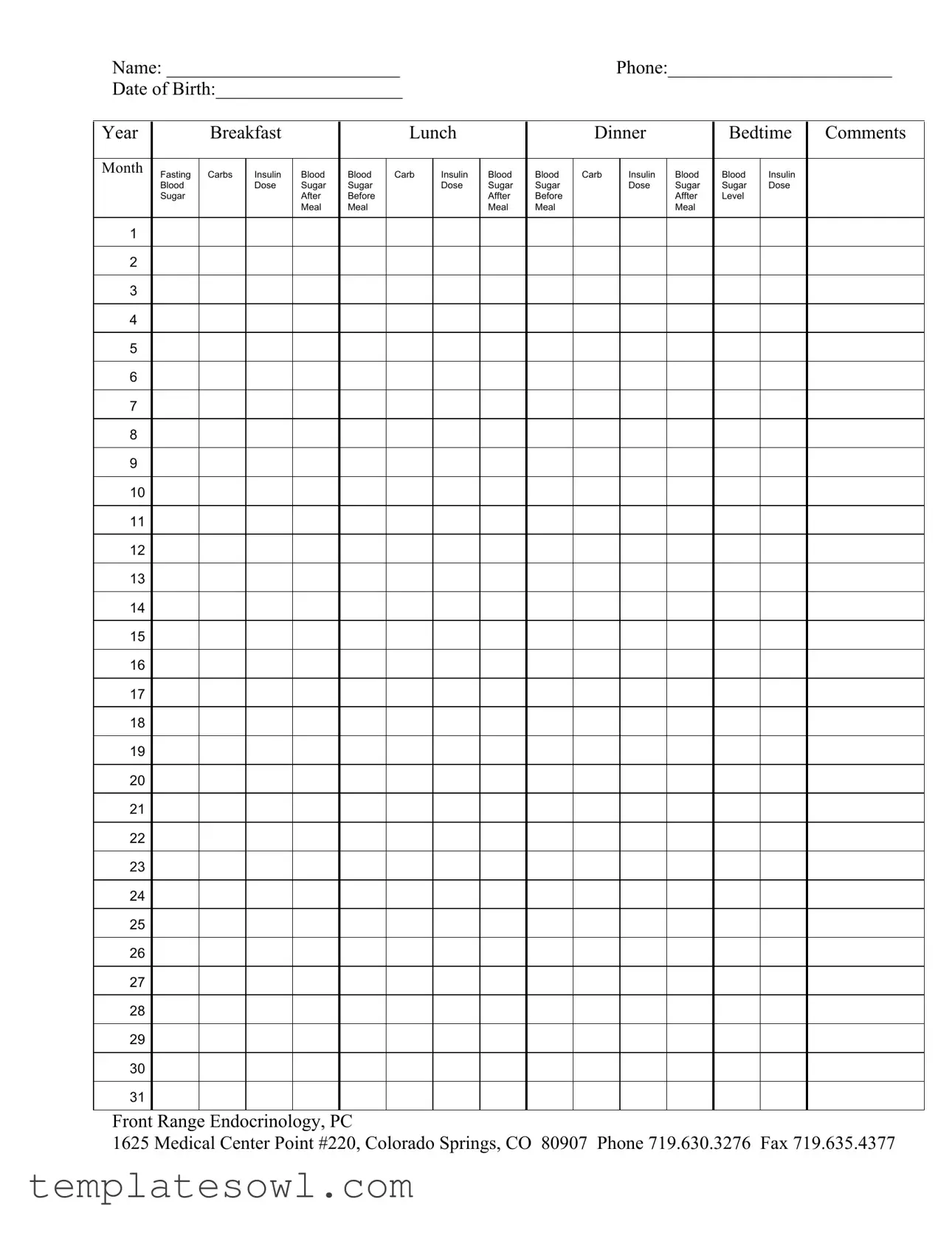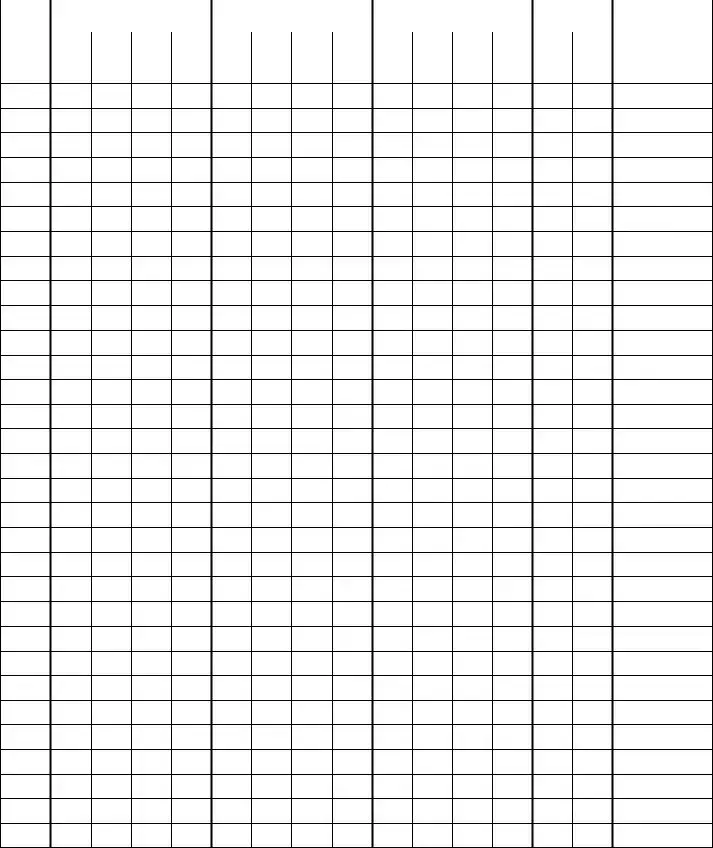What is the purpose of the Diabetes Meal Log form?
The Diabetes Meal Log form is designed to help individuals monitor their food intake and manage their diabetes effectively. It provides a structured way to track meals, carbohydrate consumption, insulin doses, and blood sugar levels. This information is crucial for understanding how different foods affect blood sugar and for making informed decisions about diet and medication.
How should I fill out the form?
To complete the Diabetes Meal Log form, begin by filling in your name, phone number, and date of birth at the top. Then, on the corresponding dates, record your meals for breakfast, lunch, and dinner. Include details such as carbohydrate intake and any insulin doses administered, as well as your blood sugar readings before and after each meal. Use the comments section to note anything significant that may impact your blood sugar, such as exercise or stress levels.
How often should I use the Diabetes Meal Log?
It is recommended to use the Diabetes Meal Log daily. Regular logging helps identify patterns in your blood sugar levels in relation to your food intake and insulin doses. Consistent tracking allows for better management of your diabetes and can provide valuable insights for your healthcare team.
Where should I submit the completed form?
Once you have completed the Diabetes Meal Log, you should retain a copy for your personal records and share the original with your healthcare provider. If you receive care from Front Range Endocrinology, you can submit the form directly to their office at the address indicated on the form. You can also call their office if you have questions regarding submission.
What if I forget to fill out the form for a day?
Missing a day on the log is understandable. If you forget to fill out the form for a day, simply continue logging from that point forward. It can also be helpful to recall and jot down what you remember from the skipped day when you get the chance, as this may still help in identifying patterns in your blood sugar levels.
What should I do if I notice abnormal blood sugar readings?
If you observe blood sugar readings that consistently fall outside the normal range, it is important to discuss this with your healthcare provider. They can help you interpret the logs and make necessary adjustments to your treatment plan. Keeping an accurate and honest log is critical for your provider to make informed decisions about your care.
Can I use the Diabetes Meal Log to communicate with my doctor?
Yes, the Diabetes Meal Log serves as an effective communication tool between you and your healthcare provider. By sharing this log, you provide valuable data that can help your doctor understand your dietary patterns, insulin needs, and blood sugar fluctuations. This dialogue can lead to improved diabetes management and better health outcomes.

